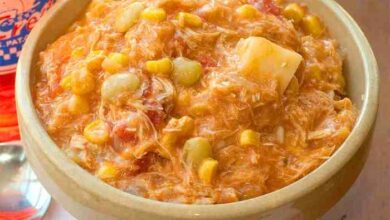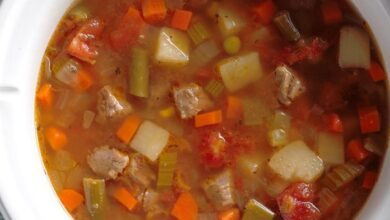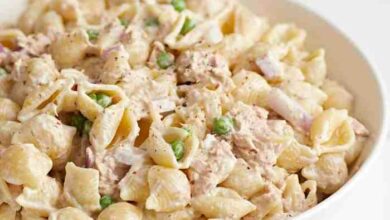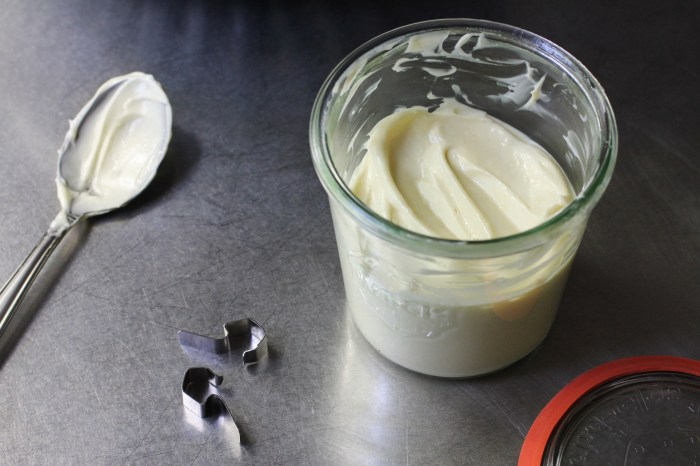
Easy Homemade Olive Oil Mayonnaise: A Flavorful Twist
Easy homemade olive oil mayonnaise sets the stage for a culinary adventure, offering a simple yet rewarding experience. Making mayonnaise at home unlocks a world of flavor possibilities, allowing you to control the ingredients and create a truly personalized condiment.
The rich, buttery taste of olive oil elevates this classic condiment, transforming it into a flavorful masterpiece.
Beyond the deliciousness, homemade mayonnaise offers a healthier alternative to store-bought varieties, often laden with additives and preservatives. By crafting your own, you can ensure that only the freshest and highest quality ingredients grace your plate. This recipe is surprisingly easy to follow, even for novice cooks, and the results are sure to impress.
Homemade Olive Oil Mayonnaise
Homemade mayonnaise offers a rewarding culinary experience, allowing you to control ingredients and create a flavorful condiment tailored to your taste. This simple recipe unlocks the potential for a truly unique mayonnaise experience, showcasing the rich, nuanced flavors of high-quality olive oil.
The Distinctive Flavor of Olive Oil Mayonnaise
The key to this recipe lies in the olive oil. Unlike traditional mayonnaise made with neutral-flavored oil, olive oil mayonnaise embraces the bold, fruity, and sometimes peppery notes of extra virgin olive oil. This creates a mayonnaise with a complex flavor profile that complements a wide range of dishes.
The intensity of the olive oil flavor can vary depending on the specific olive oil used, offering an opportunity to customize the mayonnaise based on your preferences.
Selecting High-Quality Olive Oil for the Best Results
The quality of the olive oil directly impacts the flavor and texture of the mayonnaise. Opting for extra virgin olive oil is crucial. It undergoes minimal processing, retaining its natural antioxidants and unique flavor characteristics. Here are some tips for choosing the best olive oil for your homemade mayonnaise:
- Look for the “extra virgin” label:This designation ensures the olive oil is made from the first pressing of olives, without any chemical treatments or refinement. It retains the highest levels of flavor and aroma.
- Consider the olive variety and origin:Different olive varieties produce oils with distinct flavor profiles. For example, Kalamata olives are known for their robust, peppery notes, while Arbequina olives yield a milder, fruity oil.
- Check the harvest date:Freshly harvested olive oil offers the most vibrant flavors. Look for bottles with a recent harvest date.
- Pay attention to the color and clarity:Extra virgin olive oil should have a golden-green to golden-yellow color. It should be clear and free of any sediment.
- Smell the olive oil:Extra virgin olive oil should have a strong, fruity aroma. You may detect hints of grass, herbs, or even a slight peppery note.
- Taste the olive oil:A good extra virgin olive oil should have a pleasant, slightly bitter, and peppery taste. It should leave a lingering flavor on your palate.
“The quality of the olive oil is paramount in creating a delicious and flavorful homemade olive oil mayonnaise.”
Essential Ingredients and Equipment
Making homemade olive oil mayonnaise is a simple process that requires only a few essential ingredients and readily available equipment. The key is to understand the role each ingredient plays in creating the creamy, emulsified texture that defines mayonnaise.
Ingredients
The ingredients used in mayonnaise are simple and readily available in most kitchens.
- Olive Oil:Olive oil forms the base of mayonnaise and contributes to its rich flavor and creamy texture. The quality of the olive oil directly affects the final flavor of the mayonnaise. Extra virgin olive oil is preferred for its fruity and robust flavor.
- Egg Yolks:Egg yolks are the emulsifier in mayonnaise, responsible for binding the oil and water together. The lecithin in egg yolks acts as a natural surfactant, creating a stable emulsion.
- Lemon Juice or Vinegar:Lemon juice or vinegar adds acidity to the mayonnaise, which helps stabilize the emulsion and enhances the flavor. It also acts as a preservative, extending the shelf life of the mayonnaise.
- Salt and Pepper:Salt and pepper are added for flavor. The amount can be adjusted to taste.
Equipment
The equipment needed for making mayonnaise is minimal and commonly found in most kitchens.
- Whisk or Immersion Blender:A whisk or immersion blender is used to slowly incorporate the olive oil into the egg yolks, creating the emulsion. An immersion blender is generally preferred as it provides a more consistent and faster emulsion.
- Measuring Cups and Spoons:Accurate measuring tools are essential for ensuring the right proportions of ingredients.
- Bowl:A bowl is needed to hold the ingredients while whisking or blending.
Classic Olive Oil Mayonnaise Recipe
This classic recipe is a simple and delicious way to make mayonnaise using olive oil. It’s perfect for sandwiches, salads, and dips.
Ingredients
The following ingredients are required to prepare a classic olive oil mayonnaise.
- 1 large egg yolk
- 1 teaspoon Dijon mustard
- 1/2 teaspoon salt
- 1/4 teaspoon freshly ground black pepper
- 1 cup extra virgin olive oil
- 1 tablespoon lemon juice (optional)
Equipment
The following equipment is required to prepare a classic olive oil mayonnaise.
- Food processor
- Measuring cups and spoons
- Whisk
- Airtight container
Instructions
Here are the step-by-step instructions for making classic olive oil mayonnaise.
- Combine the ingredients: In a food processor, combine the egg yolk, Dijon mustard, salt, and pepper. Blend until smooth.
- Slowly add the olive oil: With the food processor running, slowly drizzle in the olive oil. Start with a thin stream and gradually increase the flow as the mixture thickens. The mayonnaise should be thick and creamy.
- Add lemon juice (optional): If desired, add the lemon juice and blend for a few more seconds.
- Taste and adjust: Taste the mayonnaise and adjust the seasonings as needed.
- Store in an airtight container: Transfer the mayonnaise to an airtight container and refrigerate for up to 3 days.
Troubleshooting Tips
Here are some troubleshooting tips for making classic olive oil mayonnaise.
I love how easy it is to whip up a batch of homemade olive oil mayonnaise. It’s so much tastier than store-bought and perfect for adding a creamy richness to all sorts of dishes, like a delicious awesome broccoli cheese casserole.
I’m thinking of using it to make a creamy dressing for a fresh summer salad. I’m sure it will be amazing!
- Mayonnaise is too thin: If the mayonnaise is too thin, add more olive oil, a few drops at a time, until it reaches the desired consistency.
- Mayonnaise is too thick: If the mayonnaise is too thick, add a little more lemon juice or water, a few drops at a time, until it reaches the desired consistency.
- Mayonnaise is curdled: If the mayonnaise is curdled, it is likely because the egg yolks were too cold or the olive oil was added too quickly. You can try to fix the curdled mayonnaise by adding a tablespoon of hot water and blending it until smooth.
Making your own mayonnaise with olive oil is surprisingly simple, and the flavor is so much better than store-bought. It’s a great base for sandwiches, salads, and even dips. I like to pair it with a dollop of homemade old fashioned pumpkin butter for a touch of sweetness and spice.
The creamy texture of the mayonnaise and the rich flavor of the pumpkin butter make for a truly delicious combination.
Variations and Flavor Enhancements
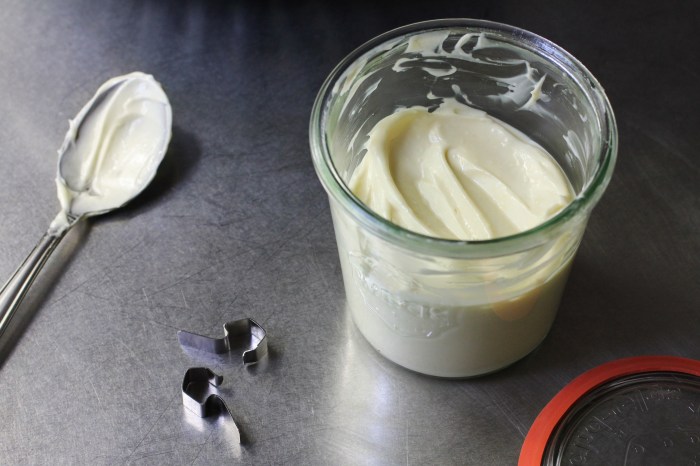
Beyond the classic recipe, homemade olive oil mayonnaise offers a canvas for culinary creativity. You can easily tailor the flavor to your liking by adding a variety of ingredients, creating unique flavor profiles for any dish.
Flavor Variations with Herbs and Spices
Adding herbs and spices to your mayonnaise can elevate its flavor profile and introduce a wide range of taste sensations. A pinch of dried herbs or a few fresh leaves can transform your mayonnaise into a flavorful accompaniment for sandwiches, salads, and dips.
- Herbs:Experiment with fresh or dried herbs like parsley, dill, chives, basil, tarragon, or rosemary. These herbs add freshness and aromatic complexity to your mayonnaise.
- Spices:For a bolder flavor, incorporate spices like paprika, cumin, turmeric, or a touch of cayenne pepper. These spices add warmth and depth to your mayonnaise, making it a perfect companion for spicy dishes.
Flavor Variations with Citrus and Garlic
Adding citrus zest and garlic can introduce bright, tangy, and savory notes to your mayonnaise. These ingredients are especially well-suited for creating flavorful sauces and dips.
Sometimes, the simplest things in life are the best. Like a perfectly creamy homemade olive oil mayonnaise, for example. It’s so easy to whip up, and the flavor is just divine. It’s perfect for sandwiches, salads, or even as a dip for those delicious Mississippi beef short ribs I recently made.
Speaking of which, that mayonnaise would have been the perfect accompaniment to those fall-off-the-bone tender ribs!
- Lemon-infused Mayonnaise:The zest and juice of a lemon add a refreshing and tangy element to your mayonnaise, making it a perfect accompaniment for seafood or grilled chicken.
- Garlic Mayonnaise:A clove or two of minced garlic adds a savory punch to your mayonnaise, making it a delicious spread for sandwiches or a flavorful dip for vegetables.
Flavor Variations with Other Ingredients
You can also explore other ingredients to add depth and complexity to your homemade olive oil mayonnaise. These additions can create unique flavor profiles that complement a wide range of dishes.
- Mustard:A teaspoon of Dijon mustard adds a tangy and slightly spicy kick to your mayonnaise, making it a perfect spread for sandwiches or a flavorful dip for fries.
- Honey:A drizzle of honey adds a touch of sweetness and complexity to your mayonnaise, making it a delicious accompaniment for roasted vegetables or grilled meats.
- Sriracha:A dash of sriracha adds a fiery kick to your mayonnaise, making it a perfect dip for chicken wings or a flavorful topping for tacos.
Serving Suggestions and Storage
Your homemade olive oil mayonnaise is ready to elevate your culinary creations. From classic sandwiches to vibrant salads and flavorful dips, the possibilities are endless. Let’s explore how to use this creamy condiment to its fullest potential and ensure it stays fresh for your next culinary adventure.
Serving Suggestions
This homemade mayonnaise, with its rich olive oil flavor, offers a versatile addition to a wide range of dishes.
- Sandwiches and Wraps:Elevate your classic sandwiches with a generous dollop of homemade mayonnaise. It pairs beautifully with grilled chicken, roasted turkey, or even vegetarian options like roasted vegetables and hummus. For a more flavorful experience, consider adding a sprinkle of herbs or a touch of mustard to your mayonnaise.
- Salads:A creamy homemade mayonnaise adds a delightful texture and richness to salads. Use it as a base for classic potato salads, coleslaw, or even as a dressing for leafy green salads. Incorporate fresh herbs, chopped vegetables, or even a squeeze of lemon juice for added flavor.
- Dips and Spreads:Homemade mayonnaise is a fantastic base for dips and spreads. Combine it with chopped herbs, spices, or even roasted garlic for a flavorful dip for vegetables, crackers, or even chips.
- Seafood:The richness of olive oil mayonnaise complements the delicate flavors of seafood. Use it as a marinade for grilled fish, a dressing for seafood salads, or even as a topping for baked fish.
- Eggs:This creamy mayonnaise is a classic pairing for hard-boiled eggs, deviled eggs, or even as a topping for poached eggs. It adds a touch of indulgence and complements the rich flavors of eggs.
Storage
Proper storage is crucial to maintain the freshness and quality of your homemade mayonnaise.
- Refrigeration:Store your mayonnaise in an airtight container in the refrigerator. The cold temperature helps to slow down the growth of bacteria, ensuring its freshness.
- Duration:Homemade mayonnaise, when properly stored, can last for up to 5 days in the refrigerator. However, it’s best to consume it within 3 days for optimal flavor and texture.
“Always remember to use a clean spoon when scooping out mayonnaise from the container to avoid contamination and ensure its longevity.”
Nutritional Information and Health Benefits: Easy Homemade Olive Oil Mayonnaise
Homemade olive oil mayonnaise, while indulgent, can be a part of a balanced diet when consumed in moderation. It offers a unique nutritional profile compared to store-bought varieties, primarily due to the use of high-quality olive oil.
Nutritional Value of Homemade Olive Oil Mayonnaise
Homemade olive oil mayonnaise, made with simple ingredients, provides a good source of healthy fats, particularly monounsaturated fats, which are beneficial for heart health. It also contains vitamins and minerals, including vitamin E, an antioxidant that protects cells from damage.
However, it’s important to note that mayonnaise is high in calories and fat, so it should be consumed in moderation.
Health Benefits of Olive Oil
Olive oil, the star ingredient in homemade mayonnaise, is renowned for its health benefits. It’s a rich source of monounsaturated fatty acids, particularly oleic acid, which has been linked to:
- Reduced risk of heart disease:Monounsaturated fats in olive oil can help lower LDL (bad) cholesterol levels and increase HDL (good) cholesterol levels, contributing to a healthier heart.
- Improved blood pressure:Olive oil consumption has been associated with lower blood pressure, further supporting its heart-healthy properties.
- Anti-inflammatory effects:Olive oil contains compounds with anti-inflammatory properties, which may help reduce inflammation throughout the body.
- Improved brain health:Studies suggest that olive oil may have positive effects on cognitive function and may play a role in reducing the risk of Alzheimer’s disease.
Nutritional Comparison with Store-Bought Mayonnaise, Easy homemade olive oil mayonnaise
Homemade olive oil mayonnaise often stands out nutritionally compared to store-bought varieties:

